Standing Figure (Costume Study for The Four Temperaments)
c. 1940-41
Colored pencil, graphite and watercolor on paper
11.5 x 9 inches
Signed and dated upper right
Ex-collection:
The Artist
Private collection
Sale: Christie’s November 8th, 2000
Private collection until the present
Note:
Seligmann was commissioned to design the costumes for what would become Balanchine’s groundbreaking neo-classical masterpiece The Four Temperaments. Seligmann was a painter who made works bursting with bright colours and exploding imagery. In his pieces, the human form seemed always to be moving – in fact, he based many of his paintings during the 1940s on dance forms (for example, Sarabande, from 1949). He depicted people as amorphous creatures, often weighed down by angular headpieces that swayed across the canvas, with bodies like flowing ribbons.
The Four Temperaments wasn’t dance work Seligmann had designed for: in 1941 he worked with Hanya Holm on The Golden Fleece, creating complex headwear for the two principals that looked as cumbersome as those in his paintings (reportedly, they were). For Balanchine’s piece, he used the dancers’ bodies like a canvas, turning them into literal symbols of the four temperaments.
The Four Temperaments refers to the medieval belief that human beings are made up of four different humours (black bile, blood, phlegm and bile). In a healthy body, the humours are in balance, but if one became predominant it determined an individual’s disposition. Thus we have Melancholic (gloomily pensive), Sanguine (headstrong and passionate), Phlegmatic (unemotional and passive) and Choleric (bad-tempered and angry). To depict these, Seligmann created angular headpieces with spikes, veils and flags. He designed the sleeve of one costume with individual feathers jutting straight up out of it like a wall of daggers; another piece resembled plate armour, obscuring the shoulders and morphing up the neck to become a helmet. And there was fabric. A lot of flowing, flapping fabric.
Balanchine had a vision for The Four Temperaments: to discard the idea of a narrative ballet and concentrate on the pure emotion of the dance itself. But with Seligmann’s designs explaining almost literally what, for example, melancholy looked like, the costumes did all the audience’s work for them. However, this wasn’t Balanchine’s main problem: his real issue was that the costumes obscured the choreography.
The dancer Mary Ellen Moylan, who performed at the ballet’s premiere, felt hindered by the flashy design. In an interview years later, she said, “As interesting as they were, [the costumes] were very difficult for the dancers. Balanchine was quite disconcerted and had a conversation with Seligmann, saying, ‘We see nothing! We see nothing! We don’t see Mary Ellen at all!’” However, when Balanchine asked Seligmann to cut off some of the tulle, reducing the swathing around the body, he was adamant that nothing could be cut, for then, “Where is Seligmann?”

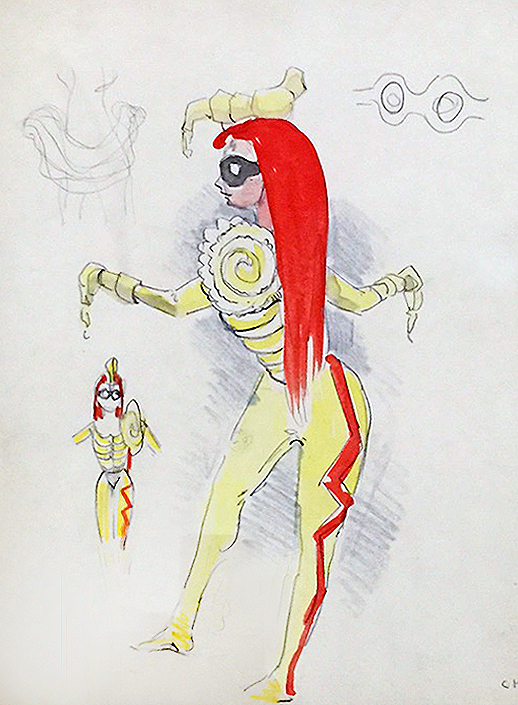
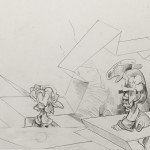 Untitled (Surrealist Study)
Untitled (Surrealist Study)
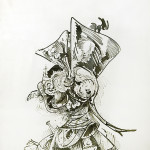 Untitled (Surrealist Head)
Untitled (Surrealist Head)
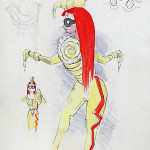 Standing Figure (Costume Study for The Four Temperaments)
Standing Figure (Costume Study for The Four Temperaments)
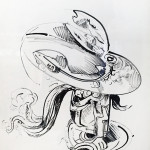 Untitled (Surrealist Study)
Untitled (Surrealist Study)
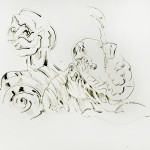 Untitled (Surrealist Study of a Head)
Untitled (Surrealist Study of a Head)
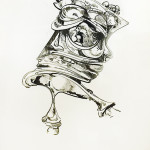 Untitled (Surrealist Dancing Head)
Untitled (Surrealist Dancing Head)
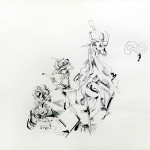 Untitled (Surrealist Still Life)
Untitled (Surrealist Still Life)
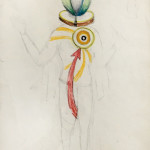 Untitled (Study for the ballet The Golden Fleece: An Alchemistic Fantasy)
Untitled (Study for the ballet The Golden Fleece: An Alchemistic Fantasy)
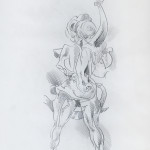 Untitled (Standing Surrealist Figure from Behind)
Untitled (Standing Surrealist Figure from Behind)
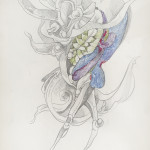 Untitled (Surrealist Standing Figure)
Untitled (Surrealist Standing Figure)
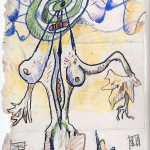 Surrealist Standing Female Figure
Surrealist Standing Female Figure
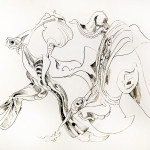 Untitled (Surrealist Study of Dancing Figures)
Untitled (Surrealist Study of Dancing Figures)
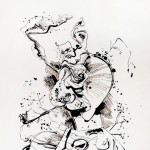 Untitled (Man with Pipe)
Untitled (Man with Pipe)
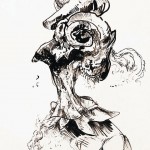 Untitled (Surrealist Head)
Untitled (Surrealist Head)
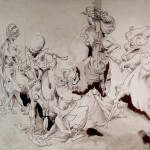 Untitled (Surrealist Group of Figures)
Untitled (Surrealist Group of Figures)